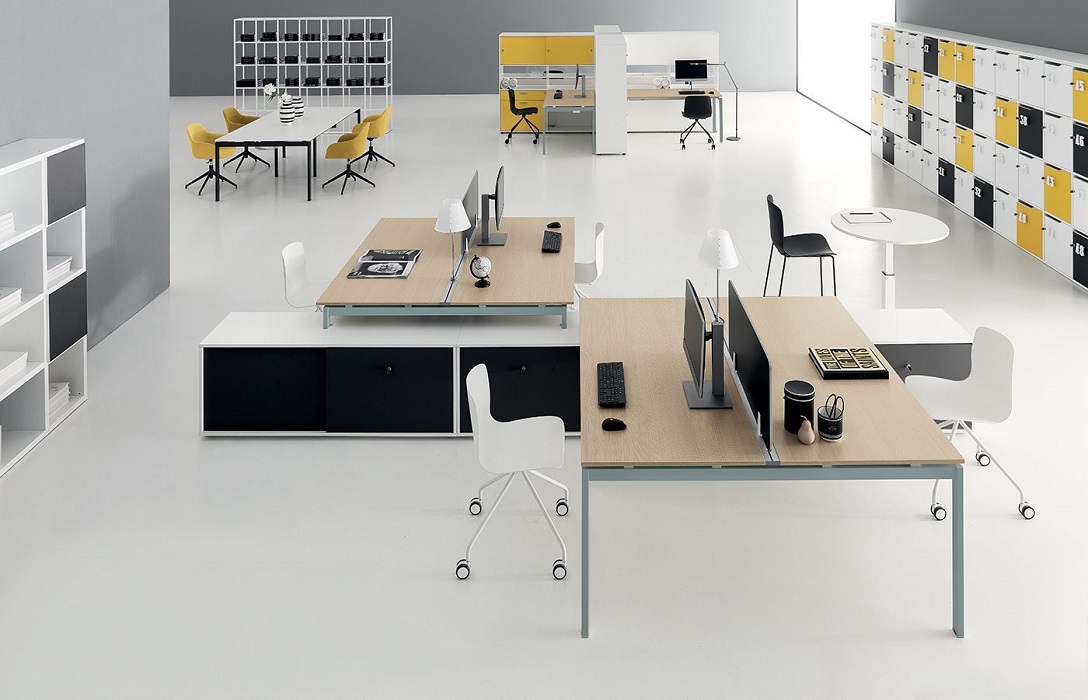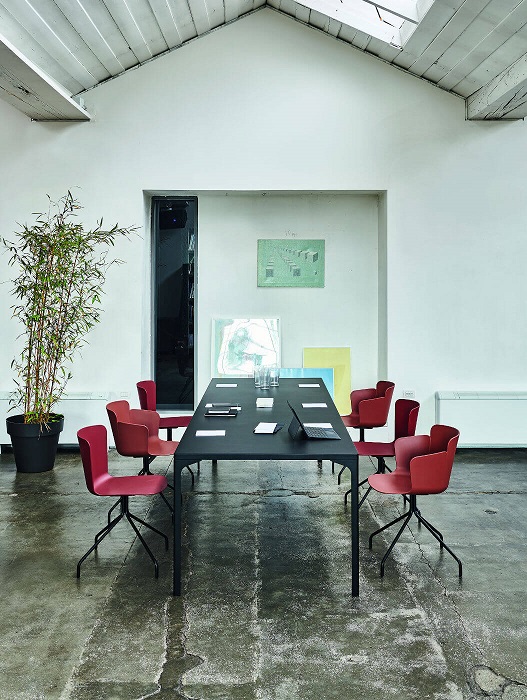
Coworking: how much does furniture affect job opportunities?
Today the office world takes on a new shape. In fact, all spaces are rethought to be safe and compliant.
So too is coworking.
Floor plans are therefore redesigned, taking into account the new distances to be adopted in common areas and defining the new modes of interaction.
In particular, in the coworking environment this last point is very important.
In fact, the design of space and furniture should be developed by creating solutions aimed not only at the creation of individual workstations, but also at fostering and simplifying collaboration and confrontation among user users, through the inclusion of functional operational furniture systems.
In this way, coworking space can offer great opportunities at the work level.

Why is coworking space a great professional opportunity?
Coworking is a generator of networking: within it, in fact, heterogeneous professionalism comes into connection.
Through coming together and comparing different realities, users are stimulated by new inputs and thus pushed to think outside the box and adopt alternative and innovative ways of working.
In addition, depending on the type of coworking, new working collaborations can develop.
Types of coworking
Horizontal coworking
Horizontal coworking embraces all professions. Workstations can be shared by users from a wide variety of fields. It can certainly be an opportunity to gain new stimulation through the meeting of similar or complementary professions.
Vertical Coworking
Vertical coworking is dedicated to a very specific sector and aimed at consolidating a network of highly trained professionals with respect to a specific topic. Through this structure, coworking can generate a real associated firm that offers complementary services.
Coworking furniture design
The design of a coworking space should involve combining different environments so that each task finds its ideal space, whether in a horizontal or vertical setting.

What areas cannot be missed when designing a coworking space?
Coworking is a business in its own right and as such must provide an entrance complete with a reception area for the information desk and a dedicated waiting area.
In this environment through the inclusion of lockers, lockable lockers, users can be offered a private space for the storage of personal belongings while in the facility.
But the main spaces are represented by the operational area and the relaxation area.
Operational Area
The design of the operations area, the heart of coworking, must be developed with special attention to furniture, favoring systems that are practical and functional but above all versatile, thus suitable for use by both the individual and the group.

So single desks, shared tables and multimedia workstations, providing for the right distances or the insertion of dividing panels where necessary.
In addition, it is very important to set up one or more meeting rooms, possibly in an enclosed environment or created through the installation of soundproof partitions. The meeting room in a coworking space is of paramount importance as it gives users the opportunity to discuss and start possible collaborations.


Relaxation Area
The relaxation area is a sharing area where users can take a break from work and get to know each other. It is precisely here that new work opportunities are developed, through the meeting of different professions. For this reason, the design of the furniture must take all these factors into account, providing single sofas for those who want to indulge in some quiet time and systems for the community.
